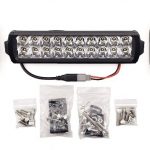How would you like to create a garden that not only lends beauty to your home, but also offers a refuge for native wildlife?
Such a garden will help sustain species of wildlife that may be disappearing due to the loss of ancient woodland, flower-rich meadows, lowland chalk and limestone grasslands, coastal marshes, bogs and other natural habitat that provide wildlife with the sustenance and protection essential to life.
Regular homeowners can help preserve natural wildlife by simply growing a wildlife garden. There are a number of organizations that promote the growing of wildlife gardens and offer assistance to people who wish to grow such gardens, but don’t know how to. These organizations include The National Wildlife Federation, headquartered in Merrifield, Virginia; the Wildlife Trust in the United Kingdom; and other similar groups.
Not only will wildlife gardens help preserve species in your region of the country, it also can help in biological pest control and promote biodiversity, preserve native plants that may be perishing and offering a benefit to the environment as a whole.
As mentioned, there are many sources you can reach out to through the Internet to obtain assistance in creating your wildlife garden. However, a little common sense also applies.
For example, wildlife will be attracted to an area that offers food, shelter, and water. The plants provide the food and you can construct the shelter and offer the source of water.
There are a variety of habitats that can be included in the garden.
· Log piles. This would be ideal for sheltering insects and amphibians.
· Bird houses and feeding stations. This will provide a place for birds to seek shelter and thus increase the number of birds in the garden. Furthermore, the presence of the birds will assist in biological pest control.
· Bug boxes. Cut wood configured in a structure above the ground will serve as an ideal source of shelter for insects that help manage natural ecosystem predators.
· Shrubs and trees. Shrubs are ideal because they offer a natural nesting place for many different species.
The food source is the plants that are growing in the garden. The National Wildlife Federation suggests that you use native plants. Native wildlife has been feeding off of these plants for more than thousands of years. A plant is considered to be native if it appears naturally in a particular region, ecosystem, or habitat without human introduction. Observe wildlife in untended lands in your area to discover their food preferences and then use those plants in the garden. Moreover, you can’t go wrong selecting plants that flower and feature a fruit. Keep in mind that nectar-rich wildflowers will attract wildlife better than showy plants. Hummingbirds will gravitate to colors like bright red and orange. Butterflies seem to prefer yellow, purple, pink, and red.
Trees and shrubs that offer berries are ideal for the wildlife garden during the winter months for birds and small mammals. In addition, vines and grasses offer food and nesting materials.
You can create a small pond to serve as home for amphibians and aquatic insects and even place a birdbath in the garden to attract all sorts of species of birds.
Resist the temptation to keep order to the garden. Various common gardening activities can adversely affect the balance of the ecosystem that has been created. The best advice is to minimize disturbance. Do not use herbicides, pesticides or fungicides. Simply allow your garden some autonomy.







